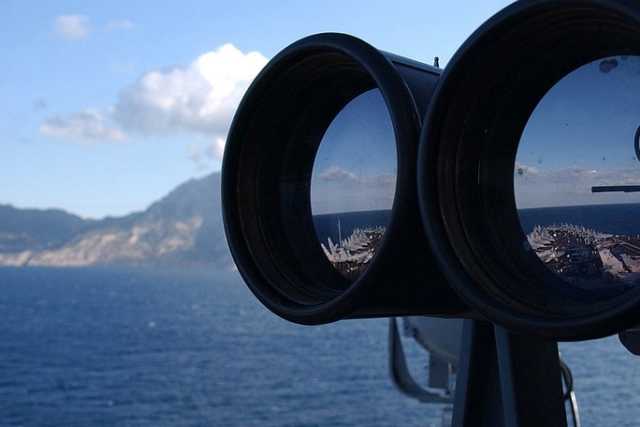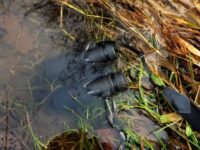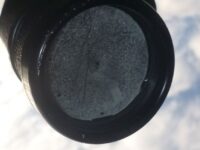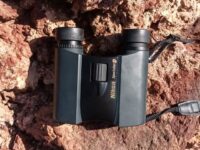Fog and waterproof binoculars are perfect for anyone who has to deal with really bad weather, extreme temperature fluctuations, and high humidity environments such as jungle or on the ocean. Waterproof binoculars guarantee functionality in virtually any weather condition. The water and fog proofing not only protects binoculars against rain, but against any kind of wet conditions. They are essential for yachtsmen and mariners.
Advantages of fog and waterproof binoculars
Waterproof binoculars are extremely useful and reliable when out in nature. The greatest advantage is: not having to worry about them getting wet. The waterproof and fog proof sealing also protect them against dirt, dust, and sand.
Prevents Binoculars Internal Fogging
But one more important advantage is that waterproof binoculars are “immune” against temperature fluctuations. Not so much that they do not fog up from the outside but from the inside. Regular binoculars that do not have a waterproof sealing are not airtight. So there is air exchange between the outside and the inside of the binoculars and humidity that is part of the air all around us may enter the binoculars.
When going from a cold environment to a warm place, you will notice water condensation on the binoculars. That happens outside as well as inside the binoculars. Moisture inside binoculars will cause mold to grow and damage the optical parts.
So waterproof binoculars have no doubt a number of advantages that allow you to go birdwatching, go hiking, hunting, fishing, or yachting on the ocean without having to worry about the weather damaging your binoculars.
How to make binoculars waterproof?
First of all, a good quality housing is needed to provide protection and a stable position of the optical parts. The binoculars housing is often rubber coated to protect the instrument from shocks and blows when use gets tough. Some models may have protective coatings in eye-catching colors, such as orange or yellow, so they are easy to spot in dull light conditions.
Although a rubber coating protects against mechanical shocks and occasional drops of water, the rubber coating alone is no guarantee that no water or moisture will get into the binoculars.
A waterproof and airtight seal is achieved by using rubber O-rings, seals, and often a gas-filled interior. Gas-filled binoculars are not only airtight but also waterproof and fog proof. Even if they fall into the water, no water gets in and they stay dry inside. And because there is no moisture in the binoculars, the interior surfaces can not fog up when going through rapid temperature fluctuations.
Why are binoculars filled with gas?
In order to protect the optical systems and mechanical parts of a high-quality pair of binoculars from fogging, growing lens fungus, and internal corrosion due to the building up of moisture, they are filled with a gas.
Binoculars are filled with gas with a slight positive pressure to prevent anything from being able to enter it. Moisture can not build up through condensation when taking the glass from cold to warm or exposing it to other temperature fluctuations.
Some binoculars have small valves that allow to control the internal pressure of the binoculars and to renew the gas filling if required. Gas-filled binoculars guaranty perfect viewing in every situation.
What gas is used to fill binoculars?
The gases used are either Nitrogen (N) or Argon (Ar). Both gases are inert and do not react with any of the materials used to manufacture binoculars.
Some manufacturers prefer the use of Argon instead of Nitrogen to fill the interior of high-quality binoculars. Argon is a noble gas of superior value. It has a higher atomic weight and the atoms are larger.
The advantage of Argon gas filled binoculars over a Nitrogen filling is that the larger Argon atoms take much longer to disappear from the binoculars. This is because no matter how accurate something is manufactured, no material and nothing is absolute gas gas-tight. And as the law of Diffusion requires everything wants to be in equilibrium.
This means that over time, the gas from the inside of the binocular, where the Argon or Nitrogen concentration is very high compared to the concentration outside the binocular, will diffuse out till an equal concentration is reached.
Are gas-filled binoculars worth it?
The benefit of gas-filled binoculars vs regular waterproof binoculars is debatable. But, fog and waterproof binoculars are more reliable as they are less prone to binoculars internal fogging of the lenses. This is especially true when regularly using the binoculars in tough weather or out on the ocean.
Purging the air and filling a waterproof binocular with an inert gas assures the benefit of them being resistant against thermal shock in extreme temperature fluctuations. However, the main purpose of waterproof binoculars, whether it is just filled with air or with a noble gas is to stop moisture from entering and preventing binoculars internal fogging and preventing mold and fungus to grow on the glass surfaces.



